No doubt, this summer has been a total whirlwind. While we know you’ve been hard at work on the projects you were assigned, it’s possible that you haven’t yet started pulling it all together into a final presentation – or maybe you have, but you’re just not sure if you’re on the right track. We’re sure that you’ve already seen, heard of, or even had these common presentation mistakes, but don’t simply avoid these blunders – take these steps to make sure that you ace your final presentation!
1. Answer the question: it may sound obvious, but you’d be surprised how often people misunderstand the question that is being asked. You may be providing a strictly quantitative analysis when your employer also wanted some more subjective details; or perhaps you and your supervisor aren’t on the same page regarding which customer group should be most extensively profiled. Before you start finalizing what you are going to say, sit down with your manager to make sure you are 100% clear on what the assignment is!
2. Apply the answer: in addition to answering the question, make sure you showcase ways that your answer can be applied to benefit the company. Whether it’s increasing efficiency, reaching out to underserved markets, selecting an excellent investment, or some other win for the organization, you’ll want to provide detailed examples of how the information you’re providing can be put into action going forward.
3. Get feedback early and often: engage your mentor, your manager, and other team members (including juniors) to review your insights as you are putting your findings together. Later on, as you are finalizing your presentation, enlist two or three of them to help you practice.
4. Show your work: make it clear how you came to your conclusions, including details that show that you are well-versed in both hard and soft skills. Don’t overdo the detail, though! Include relevant details in your appendix, sharing executive insights first!
5. Know your data: double-, triple- and quadruple-check your underlying assumptions, the numbers going into your analysis, and the results. Review axis labels and other details to ensure accuracy. By investing time now you can avoid unnecessary pain later! Be prepared to share details of where your numbers came from and how you arrived at any quantitative results.
6. Prepare for questions: as you review your presentation with mentors and colleagues, encourage them to ask questions. Be ready with answers to any questions they pose, and think through any other questions you could possibly imagine your audience having.
7. Practice, practice, practice: It can’t be said enough – running through your presentation in front of a discerning audience is unquestionably the best way to get yourself as ready as you can possibly be!
Use our final presentation checklist to guide you along the way.

